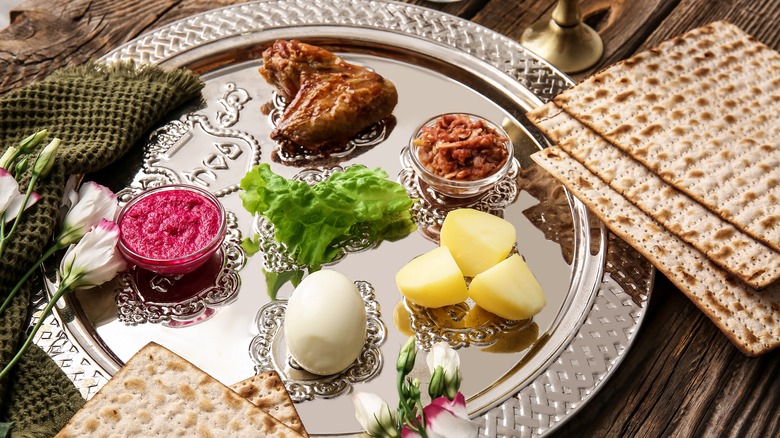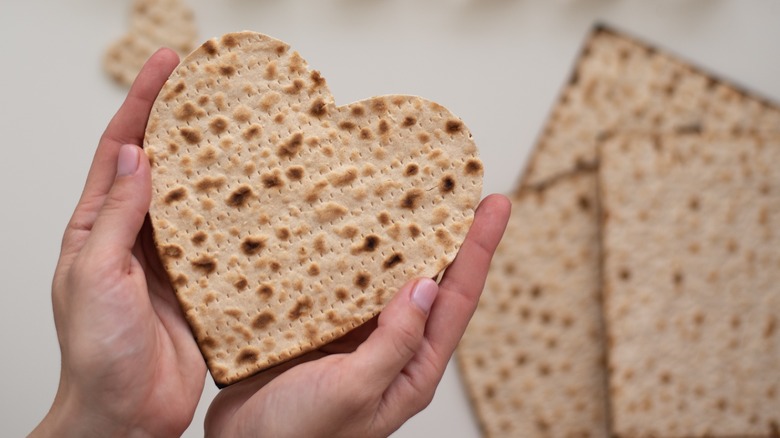The Origins Of Passover's Ceremonial Seder Meal
The Jewish holiday of Passover will soon be here, which means celebrants will be enjoying the symbolic ceremony of the seder meal shortly. Passover is the commemoration of the Exodus from Egypt led by Moses, wherein the religious leader is said to have parted the Red Sea for the Jewish slaves to escape the pharaoh's reign. The celebration lasts seven or eight days, but the most important part of the holiday is the seder meal, which occurs on the first (and sometimes second) night of Passover.
Unfortunately, there's a shortage of good historical texts capable of fleshing out a clear picture of when and where the seder meal originated. These gaps in our understanding have led to a sizable theological debate, which we are not going to pretend to be the ultimate authority on. That said, there is a general outline that is commonly held to be true. Although the Exodus took place in the 13th century B.C., the celebration of its occurrence didn't come until much later.
At the time, the Jewish people were still polytheistic and engaged in folk rituals, even if Yahweh was considered their primary deity. One such ritual was Pesach, where farmers would greet the uncertain seasons of spring and summer with an animal sacrifice as a plea for a bountiful harvest and good health for their flocks. The sacrifice was followed by a hearty feast, which gives us the first insight into how the Passover Seder came to be what it is today.
Passover traditions have evolved over time
In the 7th century B.C., after the Book of Deuteronomy was discovered stored within the treasure room of the Temple, the Jewish faith underwent a series of significant reforms. Deuteronomy is where much of the Exodus is cataloged, and included within the text are instructions on the proper way to celebrate Passover. Instead of each individual farmer performing the Pesach ritual where they lived, the sacrifice was now to be held only within the walls of the Temple.
The Temple was infamously destroyed in 587 B.C. by the Babylonians, so the practice of pilgrimage was inevitably stalled until the Second Temple was built, which was itself destroyed by the Romans in 70 A.D. Because of the destruction of the two temples, Passover is once again celebrated at participants' homes. Although animal sacrifice is no longer part of the ceremony, there is still the Passover ritual involving four wine cups and the serving of traditional foods such as cooked lamb and unleavened bread that would have been eaten during the original Pesach feasts.
In 2024, Passover will begin on April 22, which means that the first seder meal will happen that night (and on the night of April 23 if being celebrated outside of Israel). There are many Passover dishes and traditions from around the globe that call back to the original meaning behind the meal. While the seder meal is an important part of the holiday, the first night of Passover is a full day of celebration. Originally, it celebrated the passing of winter and asked for divine aid going into the difficult months of harvest. But as time went on, it became a celebration of liberation from Egypt all those centuries ago.

